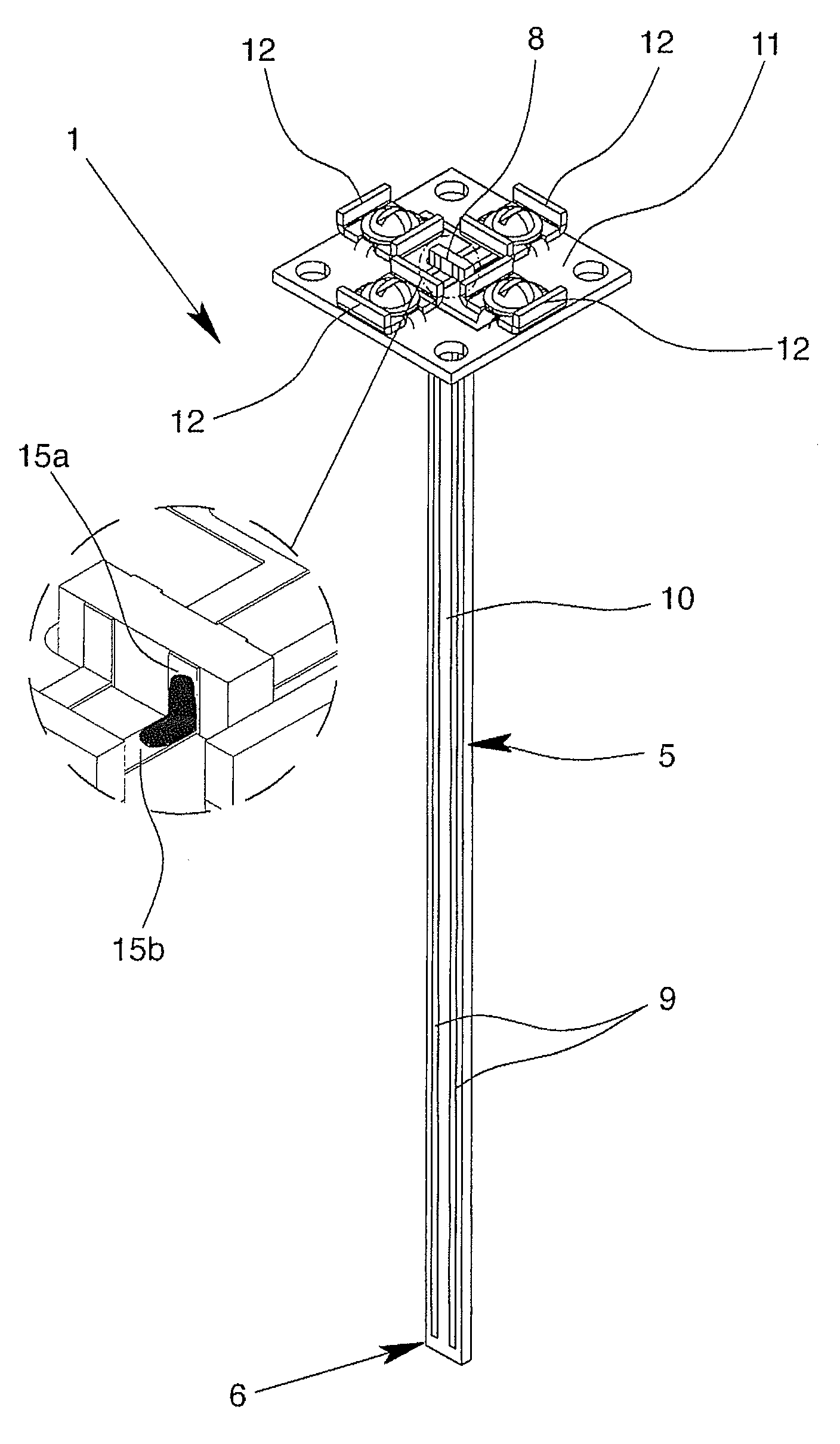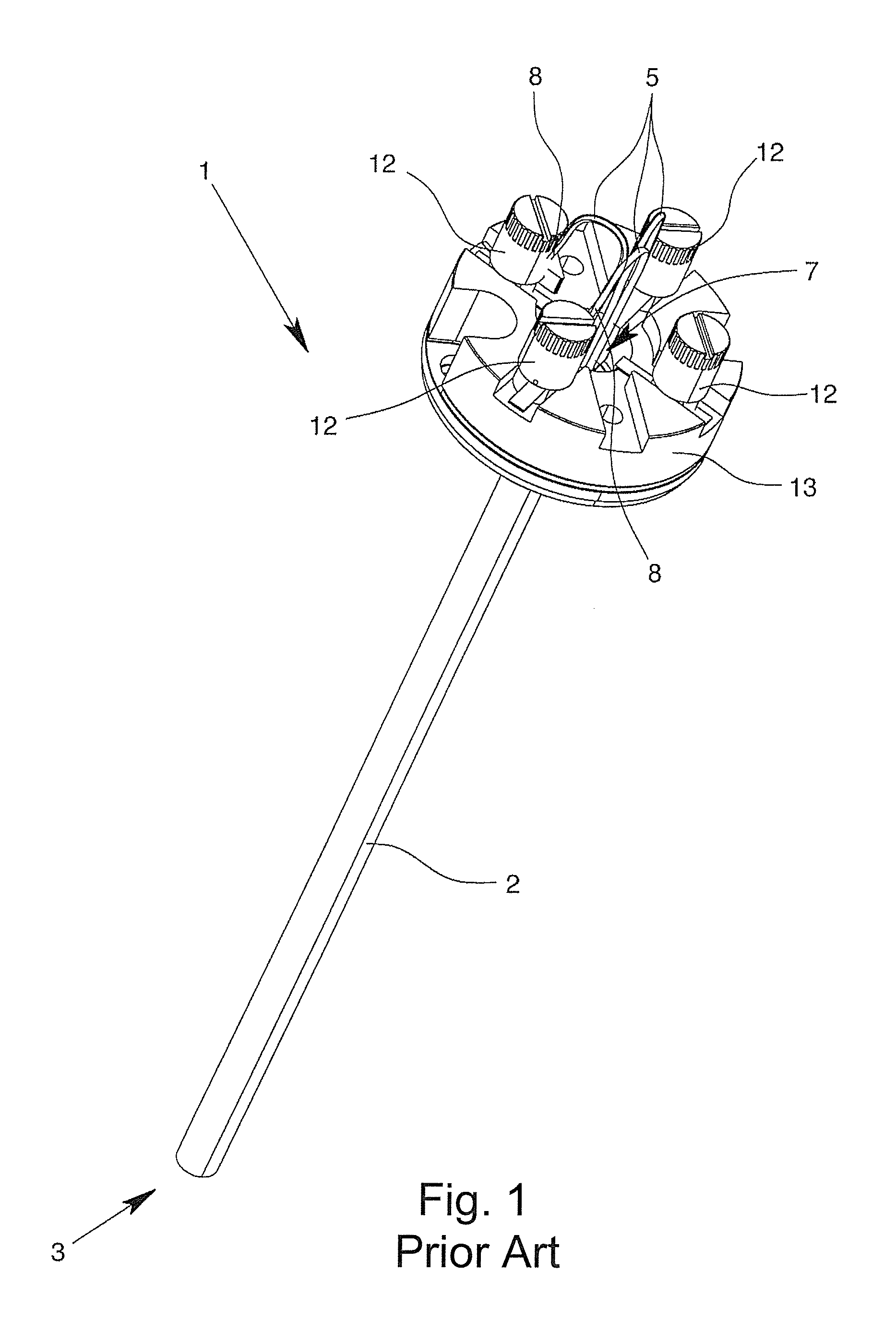Temperature detector for a contact thermometer
a temperature detector and thermometer technology, applied in the direction of resistor details, resistors using electrical/magnetic means, resistors, etc., can solve the problems of difficult handling and relatively expensive temperature detectors known from the prior art, and achieve the effect of simple and economical construction
- Summary
- Abstract
- Description
- Claims
- Application Information
AI Technical Summary
Benefits of technology
Problems solved by technology
Method used
Image
Examples
Embodiment Construction
[0026]A temperature detector 1 known from the prior art is shown in FIG. 1, which is intended for contact thermometers of process measurement technology. The temperature detector 1 has a thermowell 2, in which a thermal sensor element is arranged on the process-side end 3 (not shown in FIG. 1), which is provided with reference numbers in FIGS. 4 & 6.
[0027]The temperature detector 1 further has electrical leads as electrical connecting means 5, wherein this electrical connecting means 5—as can be seen in the version according to the invention in FIGS. 2 to 4&6—is connected to the thermal sensor element 4 with a first connection side 6. The electrical connecting means 5 then runs in the thermowell 2 to the evaluation-side end 7 of the thermowell 2, so that the thermal sensor element 4 can basically be electrically contacted via a second connection side 8 of the electrical connecting means 5. As can be seen in FIG. 1, the electrical connecting means 5 in the prior art is formed of a pl...
PUM
| Property | Measurement | Unit |
|---|---|---|
| temperature | aaaaa | aaaaa |
| temperatures | aaaaa | aaaaa |
| temperatures | aaaaa | aaaaa |
Abstract
Description
Claims
Application Information
 Login to View More
Login to View More - R&D
- Intellectual Property
- Life Sciences
- Materials
- Tech Scout
- Unparalleled Data Quality
- Higher Quality Content
- 60% Fewer Hallucinations
Browse by: Latest US Patents, China's latest patents, Technical Efficacy Thesaurus, Application Domain, Technology Topic, Popular Technical Reports.
© 2025 PatSnap. All rights reserved.Legal|Privacy policy|Modern Slavery Act Transparency Statement|Sitemap|About US| Contact US: help@patsnap.com



